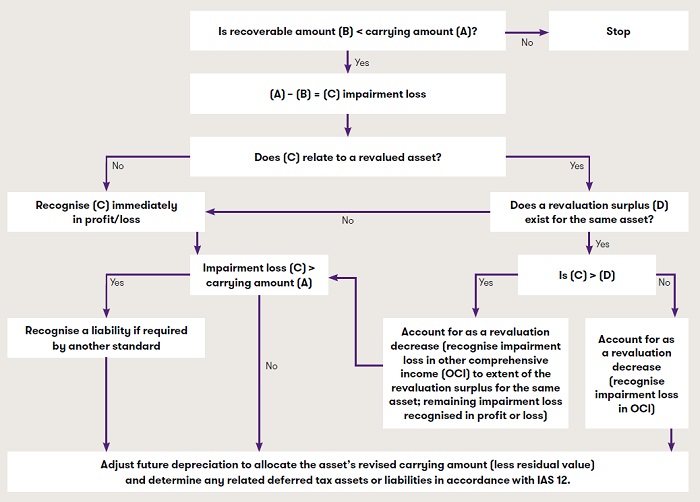-
Accounting Advisory
Our accounting advisory team help businesses meet their complex financial reporting requirements. The team can support in applying new financial reporting standards, IFRS/ US GAAP conversions, financial statement preparation, consolidation and more.
-
Payroll
Our team can handle your payroll processing needs to help you reduce cost and saves time so that you can focus on your core competencies
-
Managed accounting and bookkeeping
Outsourcing the financial reporting function is a growing trend among middle market and startup companies, as it provides a cost-effective way to improve the finance and accounting function. Our team can help with financial statement preparation, consolidation and technical on-call advisory.
-
Accounting Advisory
Our team helps companies keep up with changes to international and domestic financial reporting standards so that they have the right accounting policies and operating models to prevent unexpected surprises.
-
Crypto Accounting Advisory Service
Our team can help you explore appropriate accounting treatment for accounting for holdings in cryptocurrencies, issuance of cryptocurrencies and other crypto/blockchain related accounting issues.
-
ESG Reporting and Accounting
As part of our ESG and Sustainability Services, our team will work with you on various aspects of ESG accounting and ESG reporting so that your business can be pursue a sustainable future.
-
Expected Credit Loss
Our team of ECL modelling specialists combine help clients implement provisioning methodology and processes which are right for them.
-
Finance Transformation
Our Finance Transformation services are designed to challenge the status quo and enable your finance team to play a more strategic role in the organisation.
-
Managed Accounting and Bookkeeping Services
Outsourcing the financial reporting function is a growing trend among middle market and startup companies, as it provides a cost-effective way to improve the finance and accounting function. Our team can help with financial statement preparation, consolidation and technical on-call advisory.
-
Business Tax Advisory
Our business tax team can help you navigate the international tax landscape, grow through mergers and acquisitions, or plan an exit strategy.
-
Corporate Finance
Our corporate finance team helps companies with capital raising, mergers and acquisitions, private equity, strategic joint ventures, special situations and more.
-
Financial Due Diligence
From exploring the strategic options available to businesses and shareholders through to advising and project managing the chosen solution, our team provide a truly integrated offering
-
Valuations
Our valuation specialists blend technical expertise with a pragmatic outlook to deliver support in financial reporting, transactions, restructuring, and disputes.

-
Sustainability with the ARC framework
Backed by the CTC Grant, businesses can tap on the ARC Framework to gain access to sustainability internally, transform business processes, redefine job roles for workers, and enhance productivity. Companies can leverage this grant to drive workforce and enterprise transformation.

-
Business Tax Advisory
Our business tax team can help you navigate the international tax landscape, grow through mergers and acquisitions, or plan an exit strategy.
-
Corporate Tax Compliance
Our corporate tax teams prepare corporate tax files and ruling requests, support you with deferrals, accounting procedures and realise tax benefits.
-
Tax Governance
Our Tax Governance Services are designed to assist organisations in establishing effective tax governance practices, enabling them to navigate the intricate tax environment with confidence.
-
Goods and Services Tax
Our GST team supports organisations throughout the entire business life-cycle. We can help with GST registration, compliance, risk management, scheme renewals, transaction advisory and more.
-
Transfer Pricing
Our Transfer Pricing team advises clients on their transfer pricing matters on and end-to-end basis right from the designing of policies, to assistance with annual compliance and assistance with defense against the claims of competing tax authorities.
-
Employer Solutions
Our Employer Solutions team helps businesses remain compliant in Singapore as well as globally as a result of their employees' movements. From running local payroll, to implementing a global equity reward scheme or even advising on the structure of employees’ cross-border travel.
-
Private Client Services
Our private client services team provides a comprehensive cross section of advisory services to high net worth individuals and corporate executives, allowing such individuals to concentrate on their business interests.
-
Welfare and benefits
We believe that a thriving team is one where each individual feels valued, fulfilled, and empowered to achieve their best. Our welfare and benefits aim to care for your wellbeing both professionally and personally.
-
Career development
We want to help our people learn and grow in the right direction. We seek to provide each individual with the right opportunities and support to enable them to achieve their best.
Step 6 of applying the guidance in IAS 36 as set out in our article ‘IAS 36 – Overview of the Standard’ and relates to recognising or reversing and impairment losses. This article focuses on part of this step; recognition of impairment losses. For reversing impairment losses refer to our article ‘IAS 36 – Reversing impairment losses’.
In this article
Step 6: Recognise or reverse any impairment loss
The requirements for recognising and measuring impairment losses differ based on the structure of the impairment testing as determined in Step 2, discussed in our article ‘IAS 36 – Scope and structure of IAS 36’. The requirements for recognising and measuring impairment losses for an individual asset (other than goodwill) are addressed in firstly below; and then the requirements for recognising and measuring impairment losses for cash-generating units (CGUs) and goodwill are addressed after that.
Recognising an impairment loss for an individual asset
When the recoverable amount of an asset is less than its carrying amount, the carrying amount of the asset needs to be reduced to its recoverable amount and that reduction is recognised as an impairment loss.
For assets accounted for using the revaluation model in IAS 16 ‘Property, Plant and Equipment’ or IAS 38 ‘Intangible Assets’, the impairment loss is treated in the same way as a downward revaluation in accordance with those standards. Accordingly any impairment is recognised in other comprehensive income to the extent it does not exceed a previous revaluation surplus. Any excess is recognised in profit or loss.
To the extent the amount estimated for an impairment loss exceeds the carrying amount of the asset to which it relates, an entity shall recognise a liability if, and only if, required by another standard.
Practical insight – Impairment loss exceeds the carrying amount of the asset to which it relates
An unallocated impairment loss for an individual asset (ie a loss exceeding the carrying amount of the asset in question) might arise if the asset is expected to generate negative net future cash flows – for example an asset that is nearing the end of its economic life and requires significant decommissioning or holding costs.
In such cases the value in use (VIU) estimate would be negative. In addition, the entity might need to pay potential buyers to acquire the asset in which case fair value less cost of disposal (FVLCOD) would also be negative. In these cases, the entity would not reduce the carrying value of the asset to less than zero. The entity would look to IAS 37 ‘Provisions, Contingent Assets and Contingent Liabilities’ to determine whether a provision for decommissioning costs must be recognised.
Finally, when an entity recognises an impairment loss for an individual asset, it must:
- adjust the future depreciation (amortisation) charge for the asset to allocate the asset’s revised carrying amount, less its residual value (if any) on a systematic basis over its remaining useful life (see example 1 [ 182 kb ])
- determine any related deferred tax assets or liabilities in accordance with IAS 12 ‘Income Taxes’ by comparing the revised carrying amount of the asset with its tax base (see example 2 [ 182 kb ]).
The below diagram summarises IAS 36’s requirements for recording an impairment for an individual asset.

Recognising an impairment loss for CGUs
An impairment loss must be recognised for a CGU when the recoverable amount of the unit is less than its carrying amount. IAS 36 prescribes the impairment loss to be allocated:
- to reduce the carrying amount of any goodwill allocated to the CGU
- to the other assets of the unit, pro rata on the basis of the carrying amount of each asset in the unit.
However, in allocating the impairment loss, an entity cannot reduce the carrying amount of an individual asset below the highest of:
- its FVLCOD (if measurable)
- its VIU (if determinable)
- zero.
These amounts serve as a ‘floor’ as outlined in the below diagram.
If, for an individual asset within an impaired CGU, it is possible to measure FVLCOD but not VIU (and therefore not possible to determine the individual asset’s recoverable amount), then the floor is the higher of FVLCOD and zero. Under this scenario no impairment loss is recognised for the individual asset if the asset’s CGU is not impaired, even if the asset’s FVLCOD is less than its carrying amount.
Should the ‘floor’ be applicable for an asset; any amount that would have been allocated to the individual asset must be allocated pro rata to the other assets of the unit. The reductions in carrying amounts from applying the above requirements are treated as impairment losses on the individual assets and recognised.
The following diagram demonstrates allocating an impairment loss to assets within a CGU:

Download 'Recognising impairment losses [ 182 kb ]' for an example that illustrates the interaction of these requirements in allocating the impairment loss to individual assets comprising a CGU.



